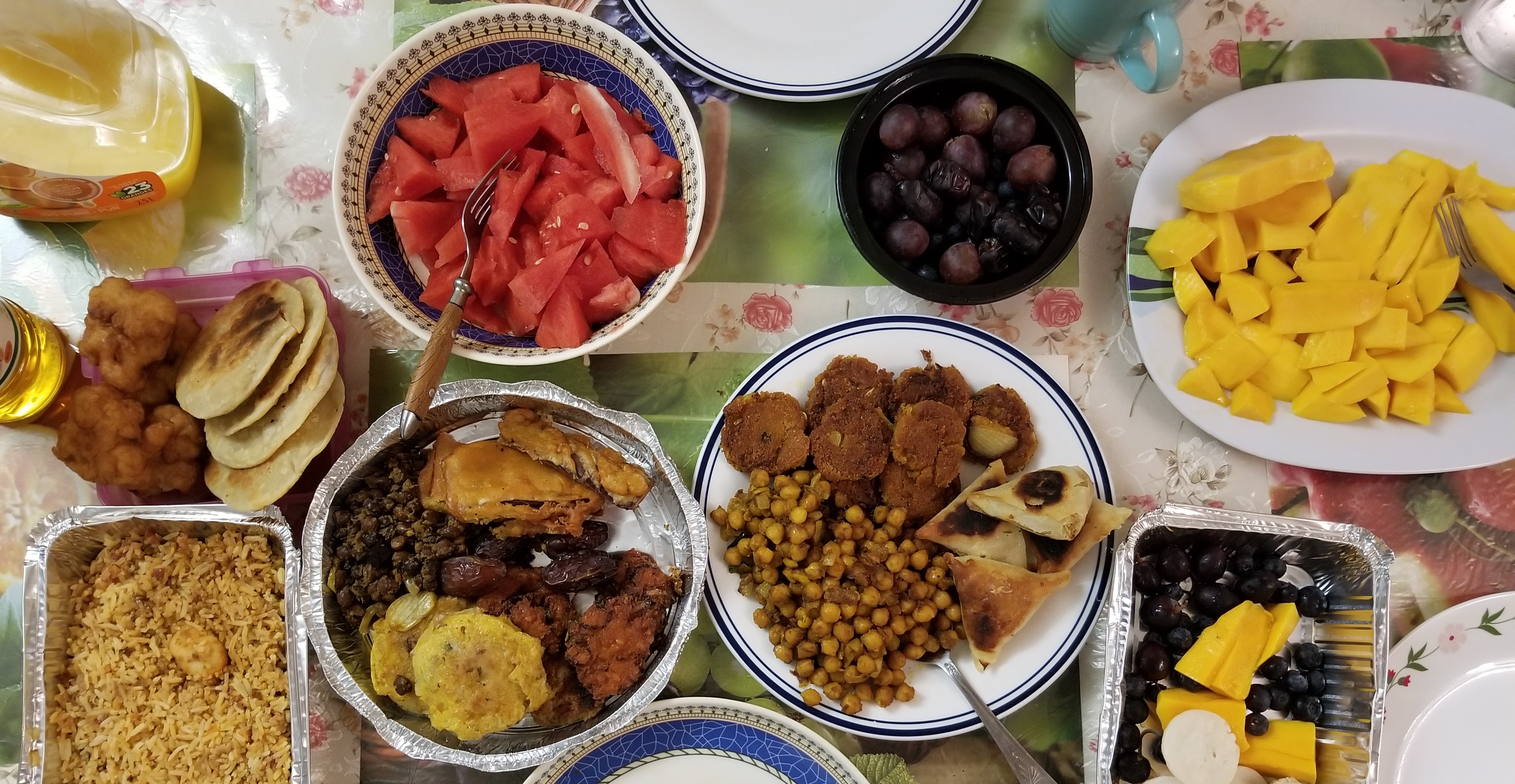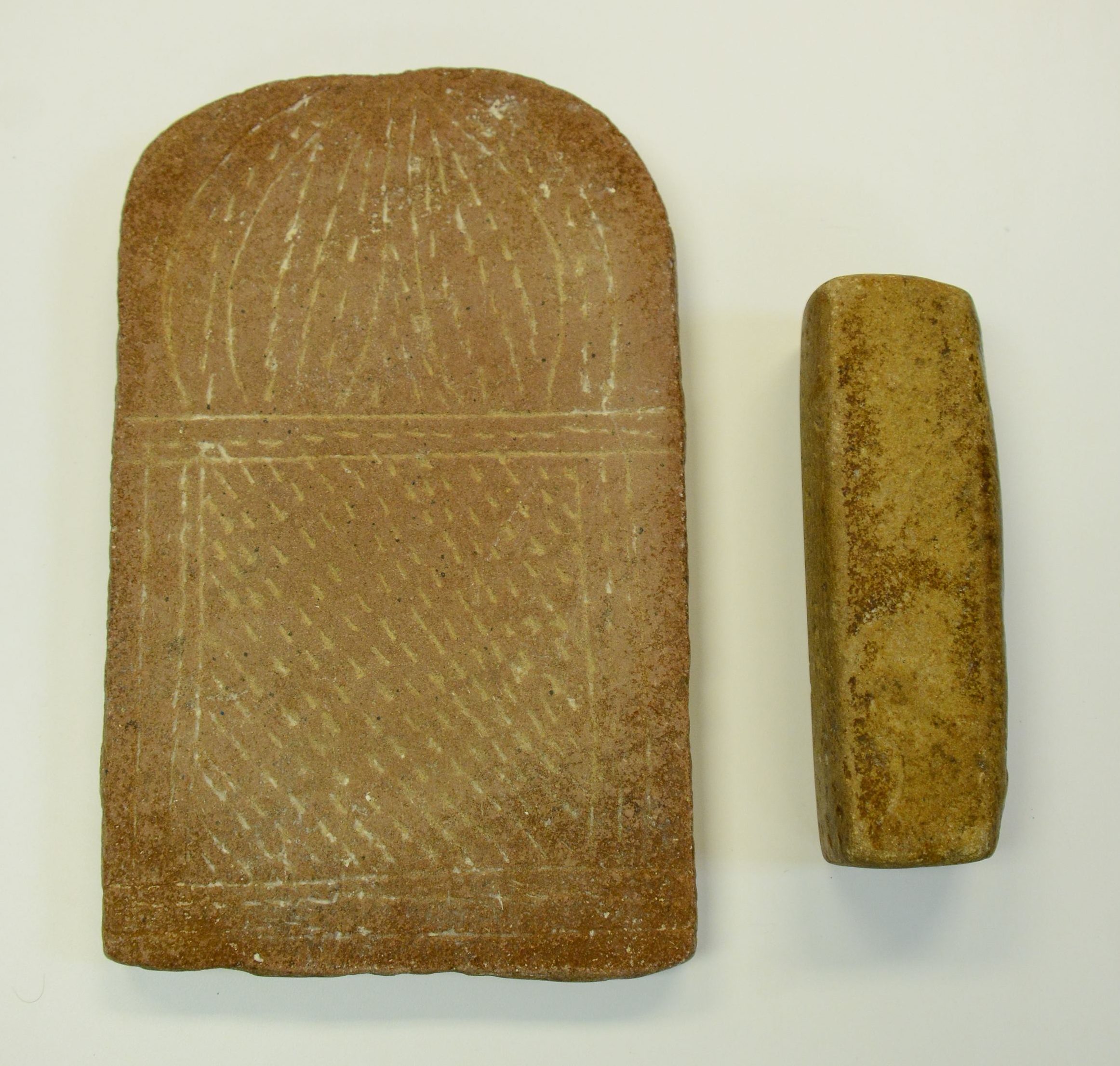Growing up in a Bengali Kitchen
by Nawrose Khan
It is late in the evening as I enter our household after work and I am immediately hit with the smell of spices, sounds of the refrigerator being open and shut and the sight of plates neatly placed around our dining table. As expected, even before I see her, my mother, who also just came home from her job, is the one setting up for iftar.
At the time of writing this piece, it is the month of Ramadan, where Muslims fast from sunrise to sunset, and also reflect on family and community relations. During iftar, we break the fast with a meal. Being brought up in a Bengali kitchen, this daily ritual is followed by a pattern in our family during this occasion, as most of the time, I join my mother to help her or cook some of the iftar meals on my own for my family.
Paying attention to what we eat, and others eat, at home
The seemingly mundane everyday activities such as making and eating food, is often filled with social, cultural and symbolic meanings. During Ramadan, meals tend to vary in different Muslim countries during iftar time. In our home, traditionally, we make common Bengali items such as chola (cooked chickpeas), daal boras (a kind of lentil fritter) and beguni (sliced eggplants dunked in flour), which is always accompanied by dates, muri (puffed rice), and a mix of different fruits and drinks (Figure 1). As my mother puts the lentil-paste mix combined with onions, spices and green chillies beside the stove, I take it as my cue to start frying them. While I flip the daal boras with the spatula as the texture of each one turns crispy with the oil sizzling, my mom tells me how in the streets of Bangladesh, vendors deep fry snacks for iftar, a taste that she says is hard to find here in Canada. I have not had the opportunity to have iftar foods actually in Bangladesh. However, making iftar dishes and Bengali meals in general with my family here in Canada, is how I feel a connection to my culture and a bond with Bangladesh. This was not always the case.
Growing up, I grappled with feeling a link to my birthplace, and didn’t appreciate or engage in Bengali practices the same way I do now because I wanted to immerse myself into Canadian culture. As an immigrant, there is a sense of needing to integrate into the customs, norms and practices of receiving society to feel accepted. As a result, markers of differences such as ethnic food can leave feelings of stigma, in my experience. I noticed this disjuncture as a child as the food of specific migrant groups, those unfamiliar flavours and customs, become cases of prejudice and “otherness”, despite living in a country that supposedly embraces multiculturalism and relies on the food of different cultures for tourism and economic purposes.
My settlement in Canada and my ethnicity as Bengali, raised between both, affected my understanding of who I am. It also informed my familiarity or not, with Bangladesh. Khosravi (2010), using the descriptions of Lukbkemann, states that, “prolonged resettlement brings about profound transformation in social identities and organization, in socioeconomic practices and expectations and in social life strategies, all of which in turn modify refugees’ own notion of where and what is “home.” (p. 86) These notions can result in similar narratives of migration experience. These narratives of experience allow us to use the self as an entry point within a larger ethnographic context (Taber, 2012, p. 80).

Being on the “inside” looking out
My personal experiences gave me the insider perspective to look at my migration story and acknowledge how it relates to existing literature and understandings of my diaspora group, helping to highlight several important themes, concepts and questions. Due to migrating from their country of origin, many migrants have pursued and maintained ties with their homeland. A strategy has been to look at how migrants keep ties to their original societies through their use of objects.

When my parents immigrated to Toronto, my mother brought along a few pots and pans and some other cooking tools and utensils from Bangladesh with her for the new kitchen. Among a few of the objects, one that notably stood out to me was called a shil batta or shil nora (Figure 2). It was given to her by her father as a gift before she left for Canada. It has been a part of our kitchen ever since. She also used to have one back in Bangladesh when she was growing up, so the shil batta has been part of our family for generations. A shil batta is similar to a mortar and pestle and is usually made out of stone or granite. There are two parts to it. The shil—is the large flat rectangular-like part with a pitted and dotted surface and the batta—is small and pestle-like, almost a roll or pin shape and very hefty. It is used for grinding or mashing different spices and cooking ingredients. Based on my knowledge, this grinding stone method has existed for centuries in South Asian culture as many different groups and religions across India, Bangladesh and Sri Lanka use it. Back when our kitchens were not equipped with technological devices such as hand mixers and blenders, people had to process their food using this stone method that required the item to be placed on the heavy stone shil, where it is crushed back and forth by the batta. It is a difficult task in order to make a fine paste due to moving the stone in an appropriate direction continuously. I remember my mother would grind lentils, chepa shutki (a semi dried traditional fermented fish) and spices more than four or five times. The entire process was done by sitting or standing and sometimes bending or hunching her back. The object’s use across time, space and place provides many insights into how it functions as a way for homemaking in both generations of women in our household and our roles in upholding continuing links with the homeland in Bangladesh.
Learning about the shil batta
The shil batta can be interpreted as a social act to study how others activate it as memories and records. Drawing inspiration from sociologist Liza McCoy, who examines ‘looking’ at different discourses, she draws on instances involving mug shots, identity cards and wedding photos to explore how viewers activate the photographic ‘text’. (McCoy, 1995, p. 181). McCoy’s essay is significant in my writing about how the shil batta can be a site of knowledge when activated. When I placed my version of a visual ‘text,’ the shil batta, on the table for both my parents to observe and talk about, they had one common memory to share. My mom and dad’s first experience with the object was not seeing their mothers use it, something that I had assumed in my mind before the discussion. Instead, both of them talked about how growing up, they had memories of the female workers or maids in their homes that would use it to grind food. Their accounts also provide a window into understanding the formation of traditional gender roles, as I learned that historically women were tasked with food preparation for families and carried the role of transmitting knowledge about cooking from one generation to the next. When I asked my mother, “Why did you bring the shil batta with you to Canada?” she replied, “Because it’s part of our Bengali culture.” The way she interpreted what the shil batta meant to her made me think about a valuable point of entry into examining how society works. In order to mitigate the affects that come with different changes involved in migrating to different countries, immigrants, such as my mother, bring items of their countries, like the shil batta, and cook traditional foods as a way to plant roots in new places and preserve their culture. My mother’s account of the object also included a meaningful record as she explained that the shil batta had a lot of sentimental value to her because every time she would use it here in Canada, she was reminded of her father (who gifted it to her), the food back home and the pleasure she got from using it. She told me how even though workers were the ones who used it, she was always interested and wanted to try it for herself. Once, as a little girl, when the shil batta was left unattended, she ground fried fish before being shooed away by a worker. When she detailed the names of the foods she remembered being prepped, she talked about the smells and tastes. While my mother does not frequently use it, since she relies more on electric mixers or blenders for her day-to-day needs, I asked her why she even needed to use it in the first place. She explained that for certain Bengali dishes, when the ingredients are blended by hand using the shil batta, it is smoother and finer and makes the dishes’ flavour tastier. When she told me this outcome, it made me think about the larger context of Bengali cuisine and what it means to me.
Preparing meals with my mother
Food can play a crucial role in shaping a person’s sense of social belonging. I grew up eating traditional home-made Bengali meals my whole life. Due to being raised in this way, food became part of who I am. I have a lot of memories of when I was younger, waking up to the sounds of my mom working in the kitchen. The first actions of cooking for her involved finding and cutting ingredients and I would know right away what she was making based on the distinct smell from my bed. Out of curiosity, I would poke around the kitchen, asking questions and slowly start assisting her. The practice of chopping, mixing and stirring alongside her in the kitchen became a ritual for me. When my mom prepared a meal, she would share stories about each food, usually memories of how her own mother would make them. These practices created food memories that are linked to habitual memories shaped through repetition. Dicing, serving, offering and sharing foods are memories in repeating everyday or ritual settings (Abarca & Colby, 2016, p. 6). Watching my mother gave me the chance to learn about Bengali ingredients, dishes, spices and methods. This was also a way for me to cultivate my ‘Bengaliness’: by engaging with cultural traditions and forming connections with my mother. She established what was imparted and conveyed to me in the kitchen. And because I was on the accepting end of these teachings, food and cooking became a source for cultural expectations, family values and social norms between mother and daughter.
The use of objects by migrants are a meaningful approach and tool to help explore narratives and act as a way for them to still feel connected to their native countries of origin, representing transnational bonds between people and places. The shil batta is an object that allowed for this concept to be explored, serving as a greater link to Bangladesh, my mother and food. Food can be connected to how social values, norms and ideologies are passed from mother to daughter. Furthermore, practices surrounding food such as food preparation, eating, sharing and giving can be powerful in producing and being a carrier for home, memory, relationships and tradition.
The future of traditional meals
As we clear the table after iftar is completed, my mother heads to the kitchen again to prepare meals for dinner. She likes to make a combination of diverse meals with different ingredients ranging from shak (leafy green vegetables), egg, beef, poultry, fish to chutney with rice and daal (lentils) as the staple dishes. My dad will go to Bengali markets in Toronto and take the time to look for fresh ingredients. It dawns on me what and how we consume has changed since my parent’s time. Ramadan has allowed us to sit and eat together everyday but normally, this habit is difficult with our schedules and some of us like to eat in front of the television. In addition, I find it easier to create food that is less time and money consuming, substituting or removing ingredients and while I love home cooking, I also have a preference for eating out, a practice that my parents did not grow up with. Jennings et al. (2014) found in their research of British Bengali households that while food was place-making and nostalgic at times, it was also a fluid and transformable “cultural site”, actively connecting people to transnational communities and being redefined across space, time and generations (p. 4).
While food is a marker for tradition and belonging and can be passed down from one generation to the next, it is those same future generations that decide how to maintain, conserve or oppose traditional practices and customs. As the next generation adapts and processes, some might not speak the language of their parents or grandparents. I know my proficiency in Bangla is very limited and the recipes learned from my mother are not written down but rather carried on through performative memory, which is past knowledge remembered in the active process of re-enacting (e.g. cooking). This leaves many questions regarding traditional foods being chosen and prepared in the next generation. In what ways, if they are replicated in the future, will food and the practices surrounding it change as migrant lifestyles and ingredients are modified? How will cultural meanings and the significance behind traditional food evolve in the future for migrants? These changes are inevitable but as I have discovered through my own journey, food and storytelling can be used as important components in learning about and recovering your heritage in the face of uncertainties.
References
Abarca, M. E., & Colby, J. R. (2016). Food memories seasoning the narratives of our lives. Food and Foodways, 24(1-2), 1-8.
Jennings, H., Thompson, J. L., Merrell, J., Bogin, B., & Heinrich, M. (2014). Food, home and health: The meanings of food amongst Bengali Women in London. Journal of Ethnobiology and Ethnomedicine, 10(1), 1-14
Khosravi, S. (2010). ‘Illegal’ Traveller: An Auto-Ethnography of Borders. London, UK: Palgrave MacMillian.
McCoy, L. (1995). Activating the Photographic Text. In Campbell M. & Manicom A. (Eds.), Knowledge, Experience, and Ruling: Studies in the Social Organization of Knowledge (pp. 181-192). Toronto, ON: University of Toronto Press.
Taber, N. (2012). Beginning with the Self to Critique the Social: Critical Researchers as Whole Beings. In An Ethnography of Global Landscapes and Corridors. INTECH Open Access Publisher.
